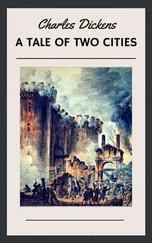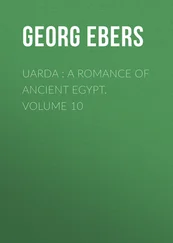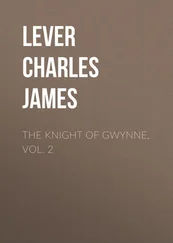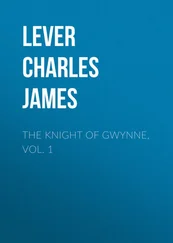Charles Bucke - Ruins of Ancient Cities (Vol. 2 of 2)
Здесь есть возможность читать онлайн «Charles Bucke - Ruins of Ancient Cities (Vol. 2 of 2)» — ознакомительный отрывок электронной книги совершенно бесплатно, а после прочтения отрывка купить полную версию. В некоторых случаях можно слушать аудио, скачать через торрент в формате fb2 и присутствует краткое содержание. Жанр: foreign_antique, foreign_prose, на английском языке. Описание произведения, (предисловие) а так же отзывы посетителей доступны на портале библиотеки ЛибКат.
- Название:Ruins of Ancient Cities (Vol. 2 of 2)
- Автор:
- Жанр:
- Год:неизвестен
- ISBN:нет данных
- Рейтинг книги:4 / 5. Голосов: 1
-
Избранное:Добавить в избранное
- Отзывы:
-
Ваша оценка:
- 80
- 1
- 2
- 3
- 4
- 5
Ruins of Ancient Cities (Vol. 2 of 2): краткое содержание, описание и аннотация
Предлагаем к чтению аннотацию, описание, краткое содержание или предисловие (зависит от того, что написал сам автор книги «Ruins of Ancient Cities (Vol. 2 of 2)»). Если вы не нашли необходимую информацию о книге — напишите в комментариях, мы постараемся отыскать её.
Ruins of Ancient Cities (Vol. 2 of 2) — читать онлайн ознакомительный отрывок
Ниже представлен текст книги, разбитый по страницам. Система сохранения места последней прочитанной страницы, позволяет с удобством читать онлайн бесплатно книгу «Ruins of Ancient Cities (Vol. 2 of 2)», без необходимости каждый раз заново искать на чём Вы остановились. Поставьте закладку, и сможете в любой момент перейти на страницу, на которой закончили чтение.
Интервал:
Закладка:
North of this place is an OBELISK, consisting of seven large stones, besides its capital, and the wreathed work above it, about fifty feet high, and just above the pedestal twelve in circumference. Upon this was probably a statue, which the Turks have destroyed.
On the west side is a most magnificent arch, on the remains of which are some vines and clusters of grapes, carved in the boldest imitation of nature that can be conceived.
Just over the door are discerned a pair of wings, which extend its whole breadth; the body to which they belong is totally destroyed, and it cannot now certainly be known, whether it was that of an eagle or of a cherub, several representations of both being visible on other fragments of the building.
The north end of the building is adorned with a curious fret-work and bas-relief; and in the middle there is a dome or cupola, about ten feet in diameter, which appears to have been either hewn out of the rock, or moulded of some composition, which, by time, is grown equally hard.
At about the distance of a mile from the OBELISK are two others, besides the fragment of a third; hence it has been reasonably suggested, that they were a continued row.
Every spot of ground intervening between the walls and columns, is laid out in plantations of corn and olives, inclosed by mud walls.
In the direction of the mountains lie fragments of stone, here and there columns stand erect, and clumps of broken pillars are met with at intervals. All this space seems to have been covered with small temples and ornamental buildings, approached by colonnades.
Next to the temple, the most remarkable structure is the long portico, which commences about two thousand two hundred feet to the north-west of the temple, and extends for nearly four thousand feet further in the same direction. “It is a remark worthy the observation of historians,” says Volney, “that the front of the portico has twelve pillars like that at Balbec; but what artists will esteem still more curious is that these two fronts resemble the gallery of the house built by Perrault, long before the existence of the drawing which made us acquainted with them. The only difference is, that the columns of the Louvre are double, whereas those of Palmyra are detached.”
About one hundred paces from the middle obelisk, straight forward, is a magnificent entry to a piazza, which is forty feet broad and more than half a mile in length, inclosed with two rows of marble pillars, twenty-six feet high, and eight or nine feet in compass. Of these there still remain one hundred and twenty-nine; and, by a moderate computation, there could not, originally, have been less than five hundred and sixty. The upper end of the piazza was shut in by a row of pillars, standing somewhat closer than those on each side.
A little to the left are the ruins of a stately building, which appears to have been a banqueting-house . It is built of better marble, and is finished with greater elegance, than the piazza. The pillars which supported it were one entire stone, which is so strong that one of them, which has fallen down, has received no injury. It measures twenty-two feet in length, and in compass eight feet nine inches.
In the west side of the piazza are several apertures for gates, into the court of the palace. Each of these is adorned with four porphyry pillars; not standing in a line with those of the wall, but placed by couples in the front of the gate facing the palace, on each side. Two of these only remain, and but one standing in its place. These are thirty feet long, and nine in circumference.
“We sometimes find a palace,” says Volney, “of which nothing remains but the courts and walls; sometimes a temple, whose peristyle is half thrown down; and now a portico, a gallery, or a triumphant arch. Here stand groups of columns, whose symmetry is destroyed by the fall of many of them; these we see ranged in rows of such length, that, similar to rows of trees, they deceive the sight, and assume the appearance of continued walls. On which side soever we look, the earth is strewed with vast stones, half buried, with broken entablatures, damaged capitals, mutilated friezes, disfigured reliefs, effaced sculptures, violated tombs, and altars defiled with mud.”
“In their ruined courts,” says another traveller, “and amid the crumbling walls of their cottages, may be seen, here and there, portions of the ancient pavement of the area; while all around the inclosure extend groups of columns, with pedestals for statues, and walls ornamented with handsome architectural decorations, the ruins of the majestic portico and double colonnade, which once inclosed the whole of the vast area. Portions of a frieze, or the fragments of a cornice, upon whose decoration was expended the labour of years, are now used by the poor villagers to bake their bread upon, or are hollowed out as hand-mills, in which to grind their corn.”
Among the walls and rubbish are a vast number of lizards and serpents; and that circumstance led to the celebrated poetic picture painted by Darwin.
Lo! where Palmyra, ‘mid her wasted plains,
Her shattered aqueducts, and prostrate fanes,
As the bright orb of breezy midnight pours
Long threads of silver through her gaping towers,
O’er mouldering tombs, and tottering columns gleams,
And frosts her deserts with diffusive beams,
Sad o’er the mighty wreck in silence bends,
Lifts her wet eyes, her tremulous hands extends.
If from lone cliffs a bursting rill expands
Its transient course, and sinks into the sands;
O’er the moist rock the fell hyena prowls,
The serpent hisses, and the panther growls;
On quivering wings the famished vulture screams,
Dips his dry beak, and sweeps the gushing streams.
With foaming jaws beneath, and sanguine tongue,
Laps the lean wolf, and pants, and runs along;
Stern stalks the lion, on the rustling brinks
Hears the dread snake, and trembles as he drinks.
Quick darts the scaly monster o’er the plain,
Fold after fold his undulating train;
And, bending o’er the lake his crested brow,
Starts at the crocodile that gapes below. – Darwin.
On the eastern side of the area of the Temple of the Sun, there is a curious doorway of one solid block of stone, which commands a fine view of the desert. “As we looked out of this narrow gateway,” says Mr. Addison, “we fancied, that Zenobia herself might have often stood at the same spot, anxiously surveying the operations of Aurelian and his blockading army. From hence the eye wanders over the level waste, across which the unfortunate queen fled on her swift dromedary to the Euphrates; and here, the morning after her departure, doubtless congregated her anxious friends, to see if she was pursued in her flight; and from hence she was probably first descried, being brought back a captive and a prisoner in the hands of the Roman horsemen.”
On the east side of the Piazza, stands a great number of marble pillars: some perfect, but the greater part mutilated. In one place eleven are ranged together in a square; the space, which they inclose, is paved with broad flat stones; but there are no remains of a roof.
At a little distance are the remains of a small temple, which is also without a roof; and the walls are much defaced; but from the door is enjoyed the magnificent coup-d’œil of all the ruins, and of the vast desert beyond. Before the entry, which looks to the south, is a piazza, supported by six pillars, two on each side of the door, and one at each end. The pedestals of those in front have been filled with inscriptions in the Greek and Palmyrene languages, which are become totally illegible.
Among these ruins there are many Sepulchres. They are ranged on each side of a hollow way, towards the north part of the city, and extend more than a mile. They are all square towers, four or five stories high. But though they are alike in form, they differ greatly in magnificence. The outside is of common stone; but the floors and partitions of each story are marble. There is a walk across the whole building, just in the middle; and the space on each hand is subdivided into six partitions by thick walls. The space between the partitions is wide enough to receive the largest corpse; and in these niches there are six or seven piled one upon another.
Читать дальшеИнтервал:
Закладка:
Похожие книги на «Ruins of Ancient Cities (Vol. 2 of 2)»
Представляем Вашему вниманию похожие книги на «Ruins of Ancient Cities (Vol. 2 of 2)» списком для выбора. Мы отобрали схожую по названию и смыслу литературу в надежде предоставить читателям больше вариантов отыскать новые, интересные, ещё непрочитанные произведения.
Обсуждение, отзывы о книге «Ruins of Ancient Cities (Vol. 2 of 2)» и просто собственные мнения читателей. Оставьте ваши комментарии, напишите, что Вы думаете о произведении, его смысле или главных героях. Укажите что конкретно понравилось, а что нет, и почему Вы так считаете.












